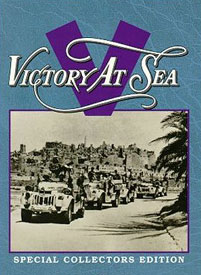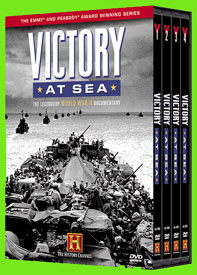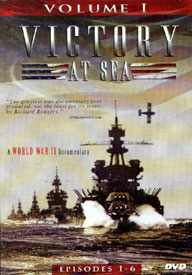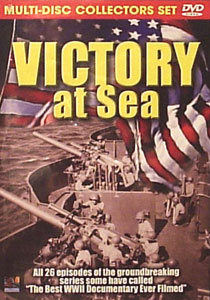 The 25-minute premiere episode of V: Victory at Sea (1952-1953), commonly cited with the "V" left off, was intended to drum up hatred for & fear of the Japanese "horde." It is narrated with warmongering intensity, striving to make the Japanese appear as battle-ready & menacing as ever a "horde" had been. The 25-minute premiere episode of V: Victory at Sea (1952-1953), commonly cited with the "V" left off, was intended to drum up hatred for & fear of the Japanese "horde." It is narrated with warmongering intensity, striving to make the Japanese appear as battle-ready & menacing as ever a "horde" had been.
The preference for the word "horde" was inherited from Victorian propaganda leading up to the California Anti-Chinese Act of 1882, when Americans were given to know in no uncertain terms that without expulsion of Asian faces, the "Yellow Horde" would overrun the nation. The same fear & terminology was used in Europe.
This "horde" was never given individual personality; it was a collective demonic power that would overrun Europe & America, whether Chinese or Japanese, if not stopped in its tracks, the singular beast with a billion identical faces.
In case we miss the point the narrator insists upon the "horde" being "fanatical" & is even fond of the word "rape" where there are no rapists.
 There were 26 televised episodes for which the first will serve as representative. The score performed by the U.S. Naval Band is grandly manipulative for its purpose, & the soundtrack became a best selling 33 rpm record album that coninued to sell well for decades after. There were 26 televised episodes for which the first will serve as representative. The score performed by the U.S. Naval Band is grandly manipulative for its purpose, & the soundtrack became a best selling 33 rpm record album that coninued to sell well for decades after.
Lots of naval footage is provided by the U.S. Navy, including from British & captured Japanese sources as well as U.S. armed forces. It was funded by the government specifically as propoganda & may stand, to this day, as the most successful propoganda project ever on American television.
Revamped for the History Channel, & still in wide circulation in various dvd packagings, the series continues in its influences though appallingly one-sided as war-time propoganda must be. The pictorial matter is undeniably significant, but the slant is racist, western race hatred being the perfect manipulative tool to insure the continuance of warfare into every generation.
Not long after its first airing of the series, the "best" bits from the series were used for a condensed feature-length documentary for theatrical release retaining the title Victory at Sea (1954). A second condensed version at feature-film length with updated narrative was Project XX: Victory at Sea (1960). This last had a theatrical release besides being shown on television in the long running documentary series Project XX (1954-1970).
 For that first episode in 1952, the parade of fallen nations is potrayed in a manner specifically to awaken paranoia, though identical imagery for Caucasian soldiers is conversely heroic just by right of being white. For that first episode in 1952, the parade of fallen nations is potrayed in a manner specifically to awaken paranoia, though identical imagery for Caucasian soldiers is conversely heroic just by right of being white.
Using the skillful soundtrack, we are informed by musical cues that certain acts committed by yellow people are menacing & horrific, but committed by white people is pleasing & good.
The wiley "Octopus" is shown in relentlessly competent organized destruction for about ten minutes, everyone helpless against the little yellow horde, until the Americans finally get involved. The music becomes upbeat, & the octopus horde is shown to be doomed, with focus on the Battle of Midway.
American soldiers are "badly hit" & "outnumbered" claiming underdog status, which heightens the excellence of "the young & the brave," who are "precise & ordered." Though orderliness in the "horde" is evidence of demonic fanaticism, it's just goodness incarnate when a cluster of brave youths are ordained with the same traits.
Yet at some point, the propoganda slant gives way to sheer weight of sacrifice on both sides of the battle. And suddenly it is not a chronicle of heroes verses the horde. It is merely sad & stupid heroism, no matter the soldier's race.
copyright © by Paghat the Ratgirl
|



